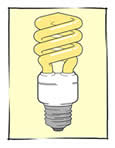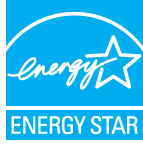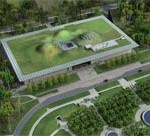 ENERGY STAR is an energy efficiency rating program developed by the U.S. Department of Energy and the U.S. Environmental Protection Agency. Most people are familiar with ENERGY STAR labeled home appliances and light bulbs, but many people may not be aware that the label is applied to more than 60 different types of products (for residential use as well as commercial building use), including heating and cooling equipment, roofs, and many types of electronics. (Note: Heating and cooling are the largest sources of energy consumption in homes; they account for almost half of a typical home’s energy consumption and energy costs.)
ENERGY STAR is an energy efficiency rating program developed by the U.S. Department of Energy and the U.S. Environmental Protection Agency. Most people are familiar with ENERGY STAR labeled home appliances and light bulbs, but many people may not be aware that the label is applied to more than 60 different types of products (for residential use as well as commercial building use), including heating and cooling equipment, roofs, and many types of electronics. (Note: Heating and cooling are the largest sources of energy consumption in homes; they account for almost half of a typical home’s energy consumption and energy costs.)
 Specific examples of products for which you can find ENERGY STAR qualified models include: air conditioners (central or room), ceiling fans, exhaust/ventilation fans, furnaces, boilers, thermostats, water heaters, refrigerators and freezers, dishwashers, clothes washers, insulation, windows, skylights, roofs, doors, light fixtures and bulbs, as well as TVs, DVD players, phones, computers, monitors, printers, copiers, etc.
Specific examples of products for which you can find ENERGY STAR qualified models include: air conditioners (central or room), ceiling fans, exhaust/ventilation fans, furnaces, boilers, thermostats, water heaters, refrigerators and freezers, dishwashers, clothes washers, insulation, windows, skylights, roofs, doors, light fixtures and bulbs, as well as TVs, DVD players, phones, computers, monitors, printers, copiers, etc.
To find out which brands and models of a particular product have earned the ENERGY STAR label, or to compare the levels of efficiency among different models, go to the ENERGY STAR Qualified Products website. Also, check with your utility company to see if they offer rebates for purchasing energy efficient equipment or appliances; many utilities do.

